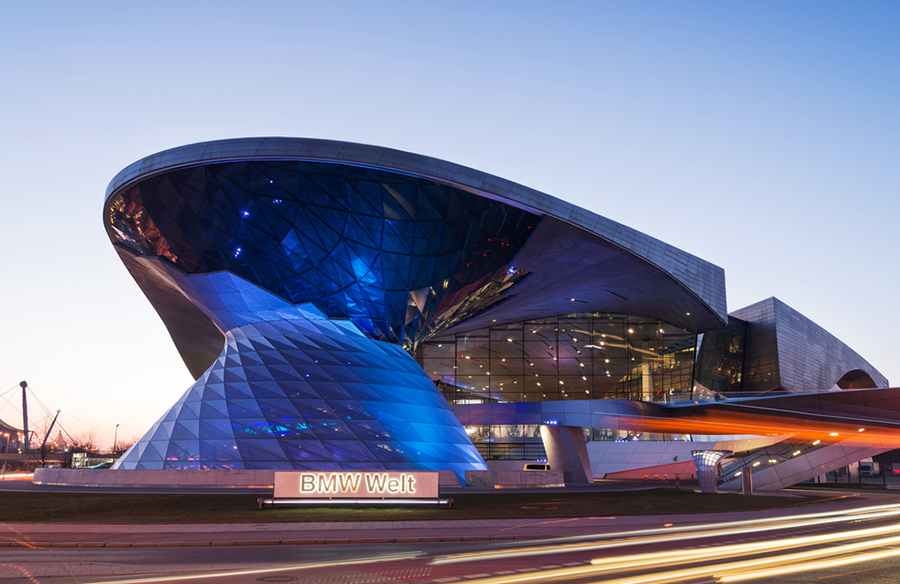How Does Architecture Incorporate Functionality And Aesthetics?

Architecture has a wide perception that it is only about aesthetics. But, is it really true? Architecture has evolved dramatically in the past decade, and it is critical to revise the misconception that architecture is only about aesthetics. Architecture is a multidisciplinary field that incorporates various aspects, including functionality, sustainability, and feasibility that shape the design of buildings. In this post, we will look at the various significant elements of architecture that go beyond aesthetics and influence the outcome of the design.
1. Functionality makes a difference
Functionality is a crucial component of architecture, and it goes beyond the aesthetics. It is not just about the looks of the building, but also about how well it performs the intended function. For instance, if a building is a library, then its primary function is to accommodate a large number of books along with comfortable reading spaces. If the design of the building only focuses on looks, the functionality of the building will be compromised, making it unusable.
2. Sustainability – A critical component
Sustainability is another essential element of architecture that goes beyond aesthetics. It is critical to consider the long-term impact of the building on the environment and the future generations when designing a building. Sustainable architecture achieves a balance between form, function, and the environment. The building's design must use locally sourced materials, create a minimal impact on the surroundings, and conserve energy and water.
3. Building codes and regulations
Building codes and regulations are laws that determine how a building is designed, constructed, and maintained. They govern all aspects of architecture, including aesthetics, functionality, safety, and codes for accessibility and energy efficiency. Architects must adhere to these regulations and codes to ensure that the building is safe for occupants and the public.
4. Cultural and social context
Architecture is not just about the physical structure; it is also about the cultural and social context in which the building is situated. The surrounding area, the cultural significance of the location, and the social context all play a role in determining how the building design should be. For instance, if the building is situated in a historical area with rich cultural significance, the design must align with the historical and cultural context of the location.
5. Construction and maintenance feasibility
Designing a building is not just about creating an aesthetically pleasing structure, but it should also be feasible for construction and maintenance. Architects must consider how the building will be constructed, the materials to be used, and how it will be maintained over time. The design must be practical, cost-effective, and easy to maintain in the long run.
6. Technology is a game-changer
Technology has revolutionized architecture, and it has become an essential component that goes beyond aesthetics and contributes significantly to the building's functioning. Different technologies like Building Information Modelling (BIM), Virtual Reality (VR), Augmented Reality (AR), and 3D printing are used to design, simulate, and test the building design before construction. This has significantly impacted the functionality and sustainability of a building design.
7. Collaboration with other professionals
Architecture is a collaborative field that involves working with other professionals such as engineers, contractors, and environmental consultants. Collaboration ensures that the building design aligns with the client's needs, adheres to building codes and regulations, incorporates sustainable designs, and is feasible for construction and maintenance. The collaboration ensures that all aspects of architecture are considered and integrated into the building design.
8. Aesthetics – A component but not the only one
Aesthetics is an essential component of architecture, but it is not the only one. Aesthetics are subjective, and they vary from one person to another. The building design must meet the client's aesthetic needs, but it should also consider all other aspects of architecture, such as functionality, sustainability, and feasibility.
Frequently Asked Questions (FAQs)
1. Why is functionality essential in architecture?
Functionality is a crucial component of architecture, as it ensures that the building performs its intended function. The building design must be practical, usable, and comfortable for the occupants.
2. What is sustainable architecture?
Sustainable architecture is a design that achieves a balance between form, function, and the environment. It ensures that the building design uses locally sourced materials, creates minimal impact on the surroundings, and conserves energy and water.
3. What are building codes and regulations?
Building codes and regulations are laws that determine how a building is designed, constructed, and maintained. They govern all aspects of architecture, including aesthetics, functionality, safety, accessibility, and energy efficiency.
4. Why is technology essential in architecture?
Technology has become an essential component in architecture, as it revolutionizes the building design process, making it more efficient and sustainable. Different technologies such as BIM, VR, AR, and 3D printers are used to design, simulate, and test the building design before construction.
5. Why is collaboration with other professionals essential?
Collaboration with other professionals such as engineers, contractors, and environmental consultants ensures that the building design aligns with the clients' needs, adheres to building codes and regulations, incorporates sustainable designs, and is feasible for construction and maintenance.
Architecture is not just about aesthetics; it is a multidisciplinary field that involves various essential components. These elements ensure that the building design is functional, sustainable, feasible, safe, and adheres to the building codes and regulations. Architects must consider all these components when designing a building to ensure that the building design meets the client's needs and aligns with the environment and cultural and social context.




Post a Comment for "How Does Architecture Incorporate Functionality And Aesthetics?"